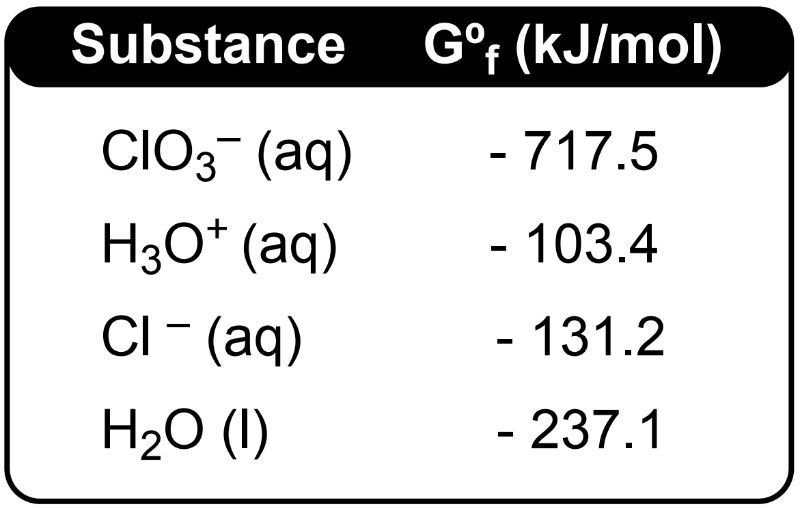Here it says to calculate the maximum electrical work that can be produced by this cell. So here we have 3 moles of cobalt 2 ion reacting with two moles of chromium solid to produce 2 moles of chromium 3 ion plus three moles of cobalt solid. With them we have their standard reduction potentials also given to us as half reactions.
All right. So remember, when they're asking us to determine the electrical work, they're really asking us to determine Gibbs free energy. So Gibbs free energy? Standard Gibbs free energy is
ΔG
∞
=
−
N
×
F
×
E
cell
If we take a look here, N is the number of electrons that are transferred. The number of electrons in our half reactions are not equal. They have to be equal. We have 3 electrons in one and two in the other. What's their lowest common multiple? 6. To get to 6 we multiply this by two and we multiply this by three.
Remember, multiplying them by these numbers does nothing to their standard reduction potentials. These would say these same numbers. What it does is it gives us these coefficients to give us our balanced overall redox reaction. So now we know that there are 6 electrons that are transferred, so we have 6 moles of electrons. Paradise constant is 96,485 coulombs per one mole of electrons and we need our standard cell potential. Here our standard cell potential is equal to cathode minus anode.
Remember, the cathode is the site of reduction and the anode is inside of oxidation. If we look at our overall balance redox reaction, we see that cobalt 2 goes from +2 to neutral, so it's oxidation number decreased, therefore it was reduced. So cobalt is the cathode. Chromium goes from neutral, which is 0 to a +3 charge. Its oxidation number increased, so it was oxidized, meaning it is the anode. So we do
−
0.28
V
−
−
0.74
V
Remember, minus of a minus here really means you're adding them together, so you get a +.46 volts here. We plug in our .46 volts here, but just remember that a Volt is equal to a Joule per coulomb, so this is joules per coulomb. And in that way if we look what cancels out, moles cancel out, Coulomb's cancel out. We'll have initially our answer in joules, but remember we typically like to have Gibbs free energy and kilojoules. So one KJ is equal to 10 to the three joules here. This gives us
−
266.3
kJ
4 Gibbs free energy. So our standard Gibbs free energy, which helps us to determine the maximum electrical work, is
−
266.3
kJ
.


